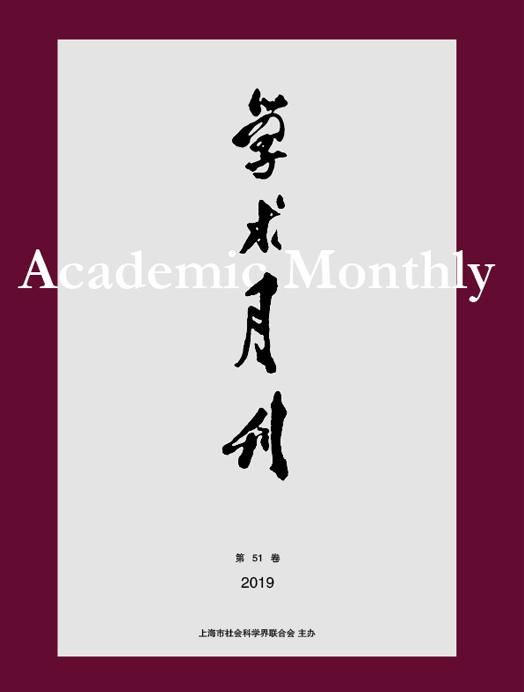Citation:
Sini MA and Gangsheng BAO. “Balanced Anti-Epidemic”: A Study on the Prevention and Control of the COVID-19 Epidemic in the Pre-Omicron Period[J]. Academic Monthly, 2022, 54(4): 78-99.

“Balanced Anti-Epidemic”: A Study on the Prevention and Control of the COVID-19 Epidemic in the Pre-Omicron Period
-
Abstract
The spread of the COVID-19 epidemic has posed many challenges to countries around the world, testing the governance capacity of different countries and regions. Shanghai is characterized by a large domestic and international population flow and a large volume of import and export shipments, so its epidemic prevention and control faces the dual pressure of cross-province and overseas population flow. However, Shanghai has achieved relatively good performance in epidemic prevention and control during the pre-Omicron period. Through a comparative study of Shanghai and other provinces and cities in China during this period, the authors found a “balanced anti-epidemic” model for Shanghai’s epidemic prevention and control, which is based on the concept of “balanced anti-epidemic” and the three pillars of “professional governance, precise prevention and control, and lean execution”. By balancing epidemic prevention and control with economic development and normalization of social life, as well as reducing epidemic risks and controlling epidemic prevention costs, Shanghai has maintained a relatively effective epidemic prevention and control. However, the limitations of this approach have become apparent with the rise of the more infectious and milder Omicron epidemic.
-

-
References
-
Access
-
-
[1]
Huping SHANG
. The Endogenous Risks of the Bureaucratic Organization and their Prevention and Control during the National Governance Modernization. Academic Monthly,
2022, 54(1): 83-97.
-
[2]
Jun WEN
, Yuting LIU
. From Passive Tool Type to Active Independent Type: The Change and Reflection of Community Prevention and Control Mode in Public Health Emergencies. Academic Monthly,
2020, 52(11): 75-86.
-
[3]
ZHU Pingfang
. Targeted Poverty Alleviation and Rural Labor Mobility:Policy Treatment Effects and Mechanisms. Academic Monthly,
2024, 56(3): 70-83.
-
[4]
. . Academic Monthly,
2017, 49(10): 13-16.
-
[5]
Yang WANG
. From Ususfructus to Habitatio: The Evolution History of Servitutes Personarum in Roman Law. Academic Monthly,
2019, 51(7): 101-112.
-
[6]
,
. . Academic Monthly,
2017, 49(03): 61-67.
-
[7]
Yun SHU
. Enabling and Implementing: The Development of Political Party Organizations in the New Technology Era. Academic Monthly,
2019, 51(12): 71-80.
-
[8]
Hongbin ZHANG
. The Updating of the Explaining of Infectious Diseases and the Disenchantment of the World in Late Qing Dynasty. Academic Monthly,
2019, 51(10): 172-184.
-
[9]
Jianyong FENG
. “Diplomatizing” the Border Governance. Academic Monthly,
2023, 55(2): 186-198.
-
[10]
Xuedong YANG
, Jian YAN
. Governance Edging out Representation?. Academic Monthly,
2020, 52(3): 59-67.
-
[11]
Wensheng QU
. Reading along the Archival Grain of the Hill vs. Ta Kee. Academic Monthly,
2023, 55(1): 191-207.
-
[12]
. . Academic Monthly,
2017, 49(08): 30-41.
-
[13]
Chen Shuisheng
. . Academic Monthly,
2018, 50(5): 101-110.
-
[14]
LIN Hua
. The Logic of Rule of Law in Urban Renewal: Interest Balance and Procedural Construction. Academic Monthly,
2023, 55(5): 94-105.
-
[15]
Ping FU
. Creating Leading-edge Integrated Governance: The Governance Innovation of Poverty Alleviation in China. Academic Monthly,
2021, 53(7): 121-131.
-
[16]
. . Academic Monthly,
2017, 49(10): 66-80.
-
[17]
. . Academic Monthly,
2016, 48(07): 45-59.
-
[18]
Zhao CHEN
. Industrial Policies with Great Power Governance. Academic Monthly,
2022, 54(1): 46-57, 82.
-
[19]
Mingke SHENG
, Yong LIU
. How Burnout of Grassroots Bureaucracy be Generated. Academic Monthly,
2023, 55(4): 114-126.
-
[20]
Xuefeng HE
, Hua GUI
. Administrative Incentives and the Logic of Rural Governance. Academic Monthly,
2022, 54(7): 126-137.
-
-




 沪公网安备 31010102003103号
沪公网安备 31010102003103号 DownLoad:
DownLoad:









